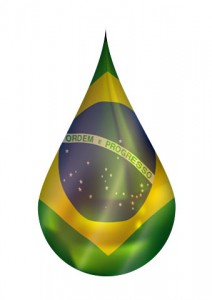Brazil’s total demand for consumer automotive lubricants is nearly 400 kilotonnes. Passenger car motor oil (PCMO) accounts for the majority of the total Brazilian market. Furthermore, there are nearly 40 million passenger cars and light commercial vehicles and over 14 million motorcycles in use in Brazil in 2015.
The PCMO demand profile in Brazil has changed in the last few years due to OEM recommendations. Lower multi-viscosity grades account for almost two-thirds of the total PCMO demand. Monogrades account for about 6% of the PCMO market. The leading grades consumed are 15W-40/15W-50, followed by 20W-40/20W-50. A new SAE 0W-20 grade was introduced in the market in 2013, mostly as a result of Honda’s change in factory- and service-fill oil specifications and recommendations, but volumes are low as of 2015.
An estimated 5% of the PCMO consumed in Brazil is synthetic and 23% is semi-synthetic. The number of popular vehicles with recommendation for synthetics is increasing, with many OEMs recommending synthetics for all their new vehicles in 2015. As a result, synthetics formulation growth is exceeding the overall average.
Growth in the segment is expected to be hindered by poor economic performances in 2016 and 2017, with volumes expected to decrease in this two-year period. Moreover, a predicted slowdown in new car sales and the adoption of synthetic grades with longer oil drain intervals is likely to restrain volume growth in the PCMO segment.
Nonetheless, growth will be faster in lower viscosity synthetic and semi-synthetic products because of current recommendations from OEMs. It is estimated that 25% of PCMO will be synthetic and 15% semi-synthetic in 2025. The overall demand for consumer automotive lubricants in Brazil is forecast to reach approximately 420 kilotonnes by 2020.
With the scrapping of old vehicles and the introduction of newer models, the use of engine oils with lower viscosity grades has increased considerably. The OEM’s recommendation of using fuel efficient engine oils will be even more important in the upcoming years for lowering overall vehicle emissions. The extension of oil drain intervals will also be a matter of technological concern due to its impact on energy conservation, engine durability, and fuel quality. Stricter emissions control will demand lower volatility base oil usage for formulating engine oil; primarily, for lower viscosity grades.
Despite the decrease in Brazil’s car production in 2015, indications are that this market will post growth over the next few years regardless of the rising economic uncertainty in the near future.
Findings such as these are available in the upcoming Global Lubricants: Market Analysis and Assessment report, as well as the in-progress Opportunities in Lubricants: Latin America and Caribbean Market Analysis report.
These studies will provide a detailed, independent appraisal of the finished automotive and industrial lubricants industry and identify market opportunities and challenges for lubricant suppliers, distributors, lubricant additive suppliers, and basestock manufacturers.


